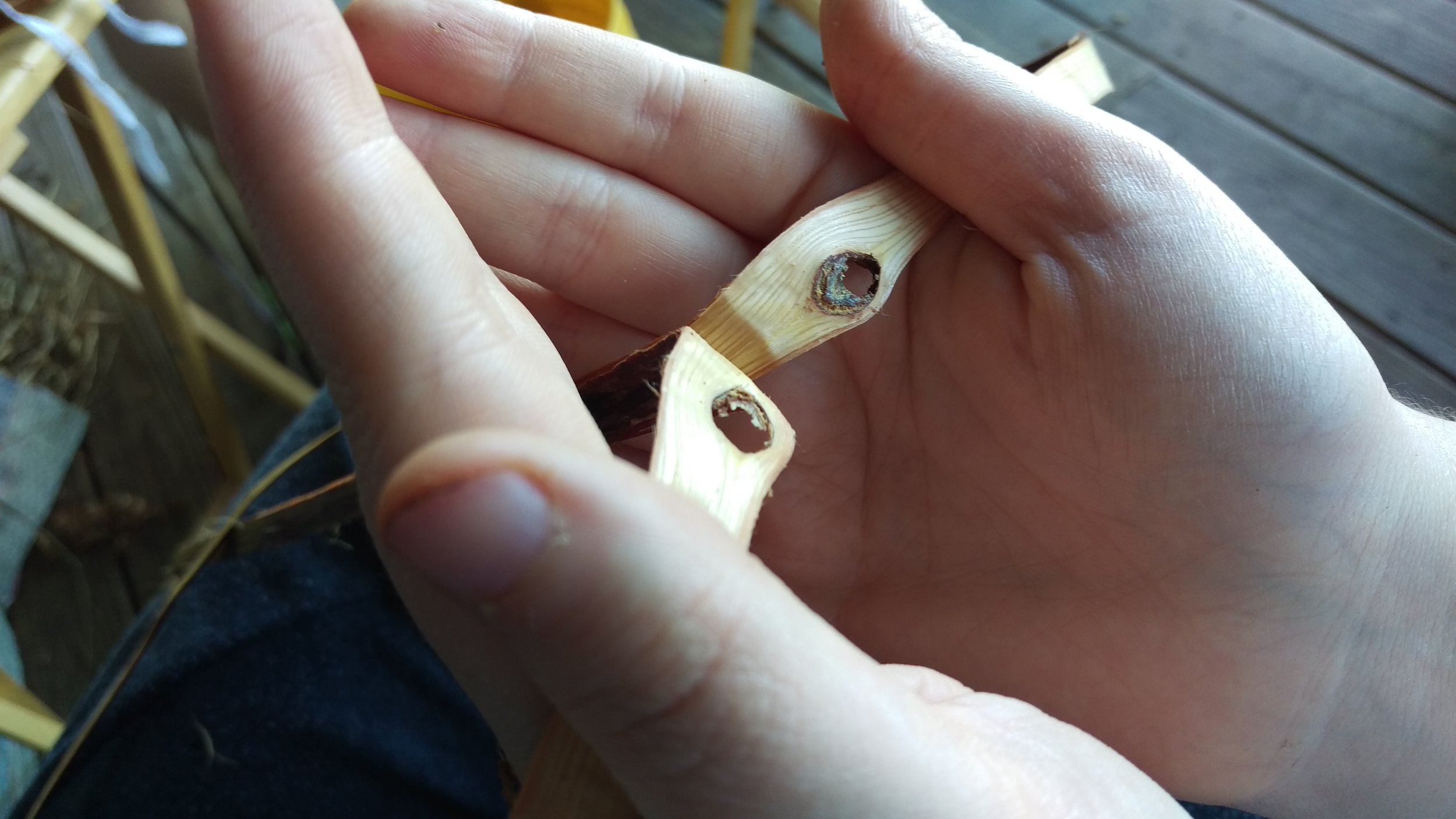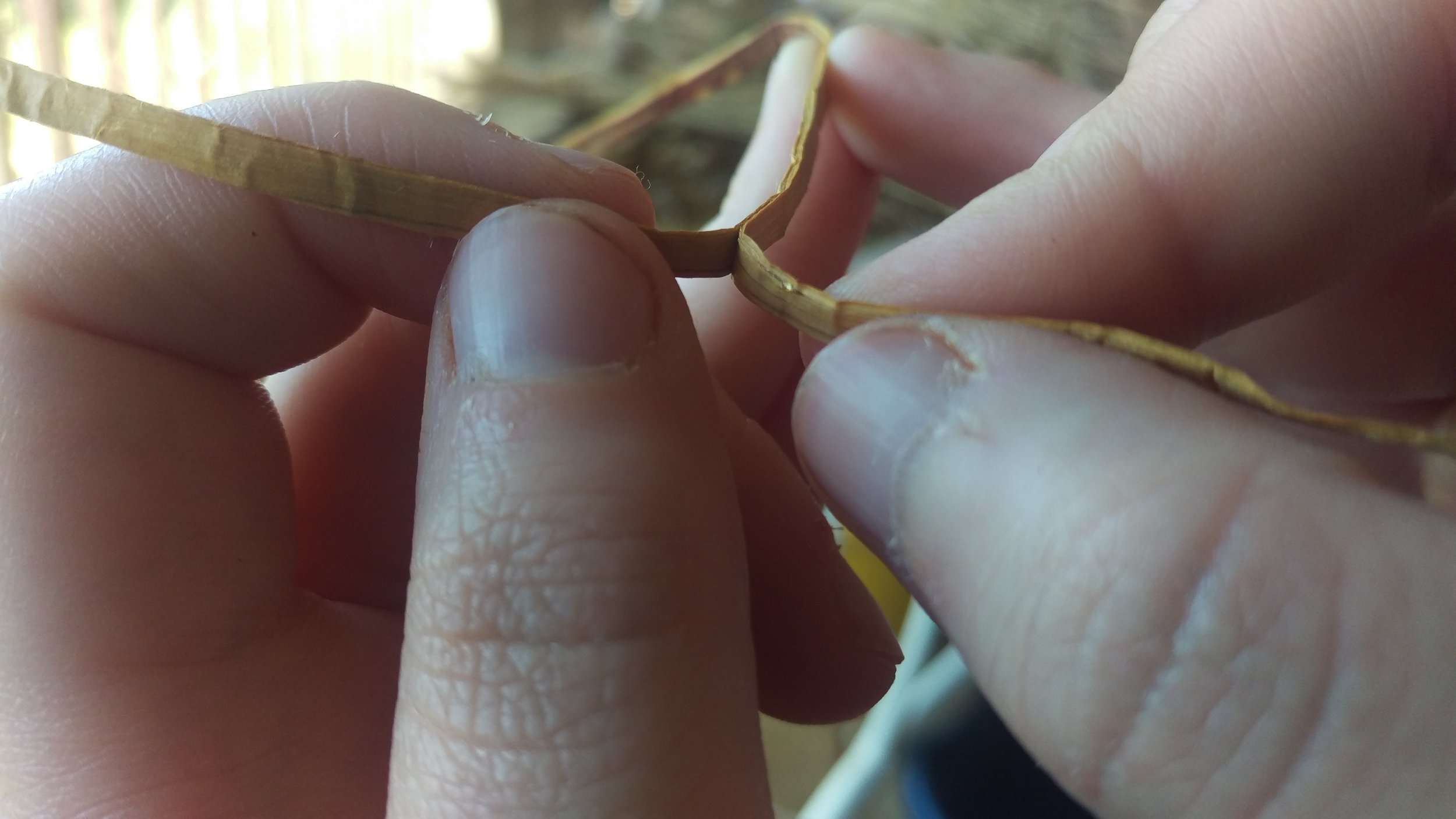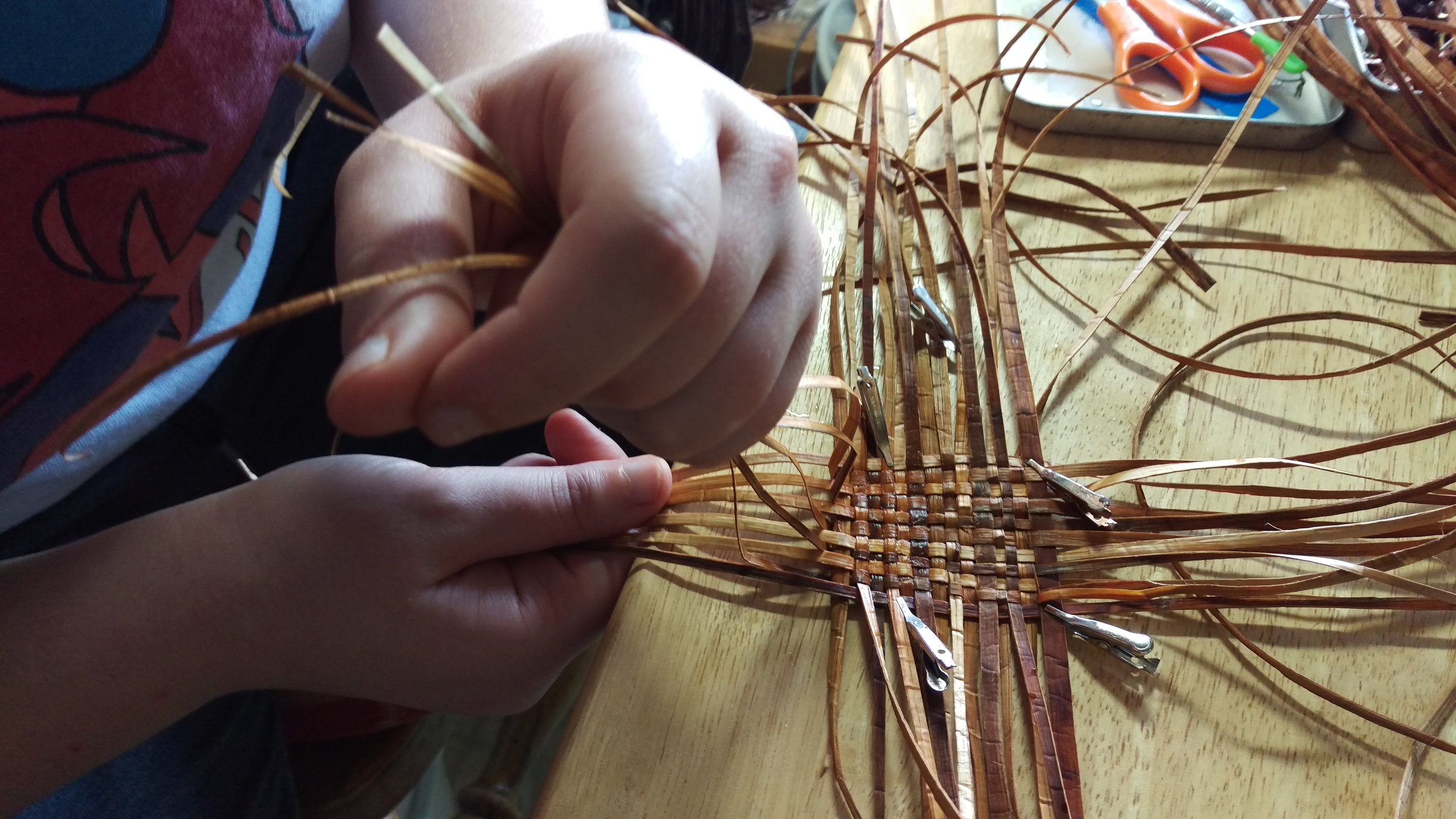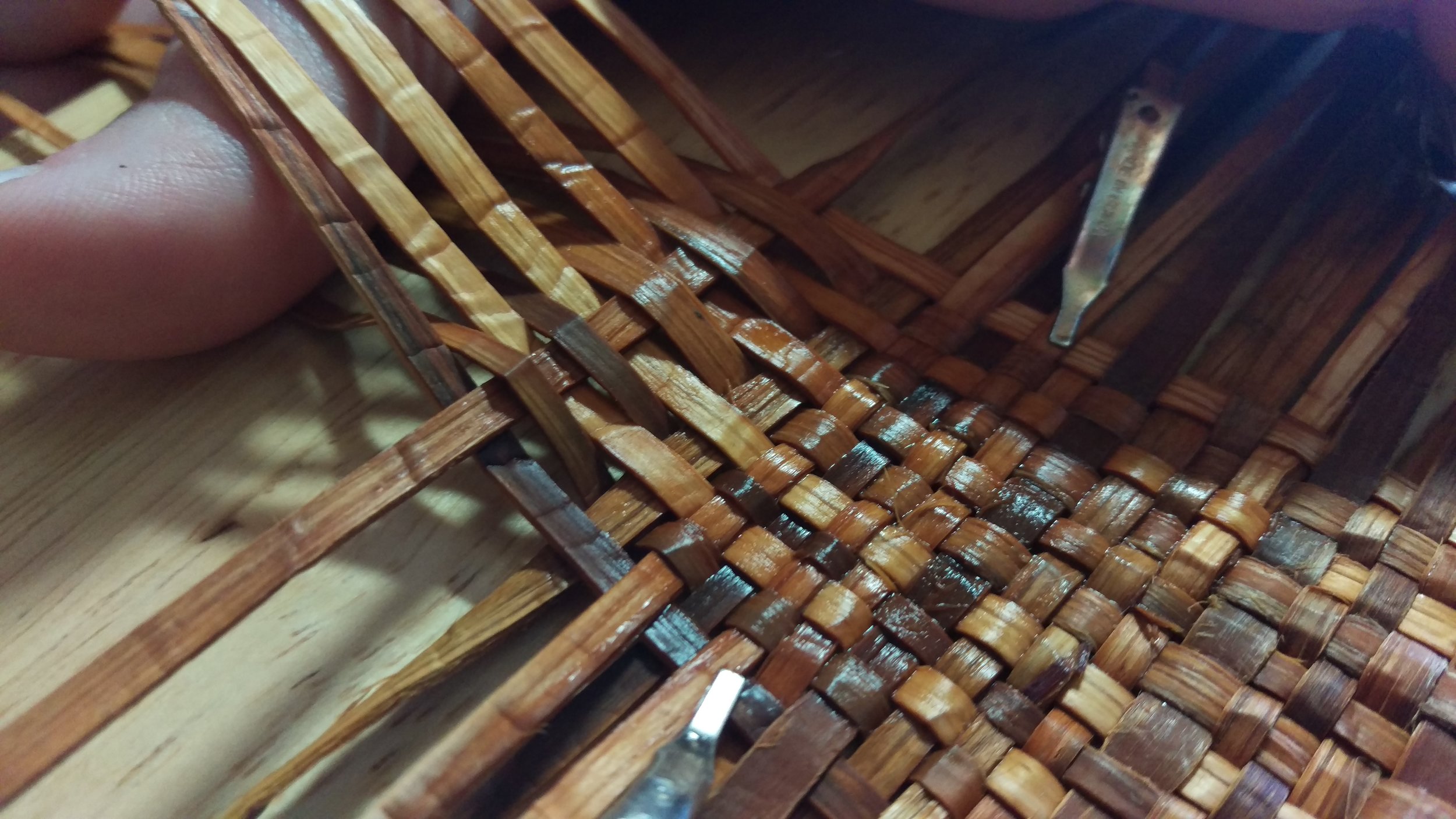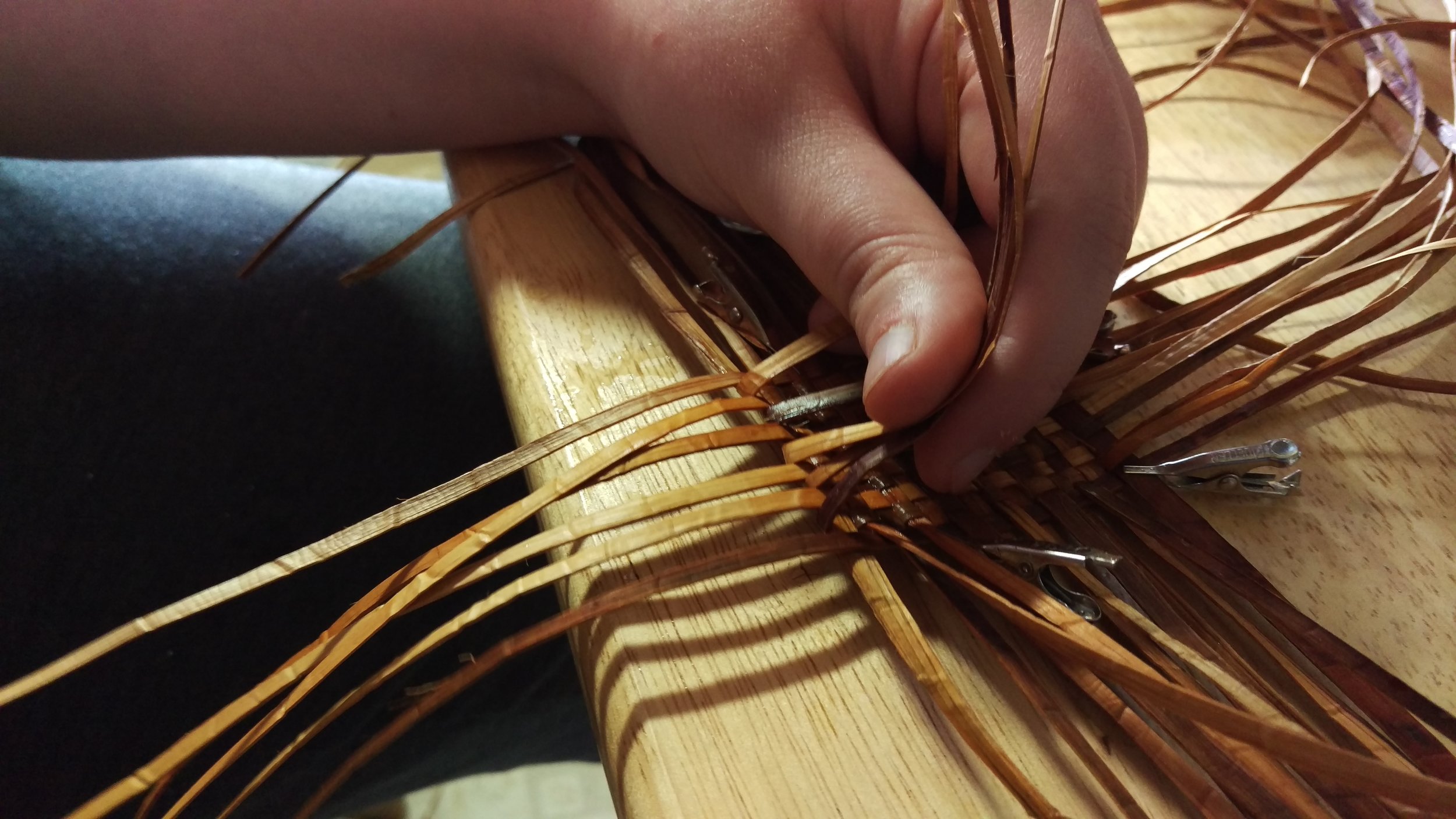Home Bound and Experimenting /
Currently, I am experimenting with weaving very small piece's and ways of plaiting instead of twining (my normal way of working). I am also trying work towards an organic shape; not a basket form. It is my first attempt and is in a rough stage in this photo; however it it is working!
Examples of basic weaves.
Part 3: Weaving Trip's with Martha Younkin /
In this part of my second trip with Martha I learned about processing Elm bark. However, I haven't woven with the bark yet. Part of my trade for her teaching me was her getting most of the bark from this tree; so next till next time for getting enough to weave with.
Here we are striping Elm bark of it's outer layer. The hardest part is not digging to deep into the inner part of the bark. Learning how to feel which is which takes a little bit of time, especially depending on on your previous training. My husband joined us for the weekend and helped work on this tree and found it to be big challenge. Luckily he captured great photos of us working!
Again, we used the hook knife to cut down the tree, although we forced it to stay straighter then we had with the Cedar bark.
With pulling up the bark it was a lot thicker and easier in some ways but it did have little pricks to watch out for!
Rooted, Revived, Reinvented: Basketry in America /
Rooted, Revived, Reinvented: Basketry in America chronicles a history of American basketry from its origins in Native American, immigrant, and slave communities to its presence within the contemporary fine art world. Baskets convey meaning through the artists’ selection of materials; the techniques they use; and the colors, designs, patterns, and textures they employ.
Light Vessel CCCXXII, 2004
Hand-split hickory, maple, monofilament: 8″ x 8″
The Arawjos began making rough Appalachian-style baskets as a hobby in 1978, and by 1980, were full-time, professional basket makers. Over the past 36 years, they have perfected their skills and developed a distinct style most recently represented by Light Vessel, which has earned the appreciation of the art world.
Kaki Shibu, 2004
Fiber: 8.5″ x 7″ x 5.5″ and 5″ x 5.25″ x 4″
The themes of containment and secrecy have driven Nancy Bess’s work for over 20 years. Inspired by the 1993 New York exhibition Secrecy: African Art that Conceals and Reveals, Bess says, “I use lids and closures to imply that, though there is something inside my vessels, we aren’t allowed access to that space and those mysterious contents.” In addition to a strong African influence, she counts Japanese, Asian Indian, and Californian colors and motifs among the inspirations for her work.
Part 2: Weaving Trip's with Martha Younkin /
Here, I am showing multiple ways of splitting the bark to make it thinner in it's width and thickness. Dividing bark in half and getting two symmetrical knots was one of the most satisfying moments of working with natural fibers.
This was me weaving Cedar for the first time. I will show photos to come of how the basket turned out and the challenges I had with learning new finishing (Rim) techniques.
Part 1: Weaving Trip's with Martha Younkin /
I took my first weekend trip to Martha Younkin's land with a group to go over the basics of processing Cedar bark. Starting off she took us through her property to explore. Martha is the one in the blue jean shirt.
After we found the trees that were ready to be cut down (Martha picked them out), we started the process by rubbing most of the outer bark off. The most outer layer has no grain or structure so it falls and peel off as you work it anyways.
Next we dragged a hook knife down, letting the grain guide us. It might twist around the tree if it is younger. Lastly we peeled it off being careful of the knots and any tearing. It is sticky and can be prickly, so watch out.
Here we are in the middle of a group demonstration on splitting the bark laterally to make it thinner.
Martha has an amazing collection of barks and grasses that she has processed and stored. Yucca (the middle photo) is my favorite because it is so fine, almost like horse hair. I believed she keep it in water for three weeks before beating it.














